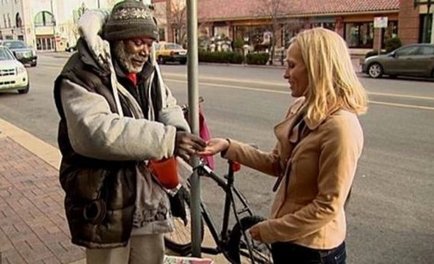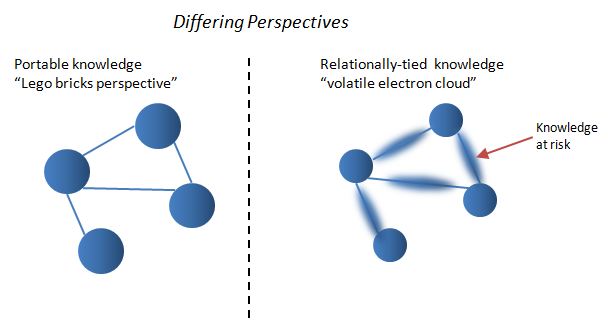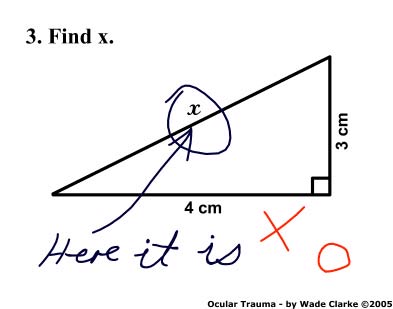I've been reflecting on the dangers of “staying with the herd” when it comes to knowledge sharing. It’s easy for our organisations to reinforce this mentality, and lead to people feeling exposed as “tall poppies” is they step out and share a good practice – or professionally incompetent if they are seen to be asking for help. I think this leads people to cluster in the middle ground of mediocrity, or to put it more kindly, a place where good is the enemy of great.
This leads me to the words of AA Milne, in his poem, “Halfway down the stairs”.
Halfway down the stairs is a stair where I sit. there isn't any other stair quite like it. I'm not at the bottom, I'm not at the top; so this is the stair where I always stop.
Halfway up the stairs Isn't up And it isn't down. It isn't in the nursery, It isn't in town. And all sorts of funny thoughts Run round my head. It isn't really Anywhere! It's somewhere else Instead!
There’s a charming version sung by Robin the Frog from the Muppet's Show on YouTube, which takes me back to my childhood! (I'll post it at the end as a treat for you)
The River Diagram is has now become a fairly well established tool, combining the principles of positive deviance with knowledge sharing. However, less people are familiar with its companion tool, the Stairs Diagram.
The Stairs diagram shows levels of capability (often derived from a common self-assessment tool or maturity model) plotted against the size of the improvement goal. The example below (fictitious) shows the results of a number of healthcare-related networks who have all used a common self-assessment tool to discuss and agree their levels of networking capability against a number of practices. They have also identified a number of targets for improvement. One of the practices in the self-assessment was "Network Leadership & Facilitation". This is the Stairs Diagram for that practice.
- The Diabetes Network is at level 5, and clearly has something to share.
- The Quality Improvement Fellows network is at level 1, but has a desire to improve by two levels.
- The Cardio-community is at level 2, and hasn't chosen this practice as a priority for improvement.
- There is a cluster of networks at level 3 with no aspiration to improve, including the Health Informatics network.
- Finally, the TB Network is at level 3, but still seeking to improve by two level.
The power of the stairs diagram is that it maps out the potential connections of highest value - connecting those who have something to share with those who have something to learn. This is shown in the green and red areas respectively.
Having a common measure (in this case, a self-assessment tool) enabled this group of networks to identify not only the positive deviants, but also the networks with the greatest aspiration to improve. For each "staircase", the group can be coached to use an appropriate knowledge management tool to help those in the nursery to improve, and those in the town to share. That might be a Peer Assist, offers and requests, a knowledge cafe, knowledge fair, storytelling approach, or the capture and sharing of a distinctive or excellent practice.
So with the right motivation, the right leadership and the right methods, you can help people avoid the stair where they always stop.
You thought I'd forgotten?


 Billy Ray is a homeless Kansas man who received an unexpected donation when passer-by Sarah Darling accidentally put her engagement ring into his collecting cup. Despite being offered $4000 for the ring by a jeweller, he kept the ring, and returned it to her when, panic-stricken, she came back the following day. Sarah gave him all the cash she had in her purse as a reward, and as they told their good-luck story to friends - who then told their friends - her finance decided to put up a website to collect donations for Billy Ray. So far, $151,000 have been donated as the story has gone viral around the world. Billy Ray plans to use the money to move to Houston to be near his family. You can see the whole story
Billy Ray is a homeless Kansas man who received an unexpected donation when passer-by Sarah Darling accidentally put her engagement ring into his collecting cup. Despite being offered $4000 for the ring by a jeweller, he kept the ring, and returned it to her when, panic-stricken, she came back the following day. Sarah gave him all the cash she had in her purse as a reward, and as they told their good-luck story to friends - who then told their friends - her finance decided to put up a website to collect donations for Billy Ray. So far, $151,000 have been donated as the story has gone viral around the world. Billy Ray plans to use the money to move to Houston to be near his family. You can see the whole story 








 Urinals. Do you spend much time looking at them?
Urinals. Do you spend much time looking at them?